Let me tell you about a dog that could easily star in a tale of wilderness and adventure. The Catahoula Leopard Dog is not your typical backyard pup. Picture this: a coat splashed with earthy tones, eyes sparkling like autumn leaves, and a spirit wild enough to fill any room with tales of the bayou.
I’ve had the pleasure of spending time with several Catahoulas, and each one has been as captivating as a sunset over the Louisiana swamps. These dogs carry a blend of ruggedness and grace that’s as intriguing as their heritage.
Every time a Catahoula looks at me with those wise, vivid eyes, I feel like I’m seeing a piece of American history come alive right in my living room. They’re more than dogs; they’re a celebration of their unique lineage.
TABLE OF CONTENTS
- Catahoula Leopard Dog Quick Breed Summary
- Origin of the Catahoula Leopard Dog
- Physical Appearance of the Catahoula Leopard Dog
- Catahoula Leopard Dog Personality and Temperament
- Taking Care of a Catahoula Leopard Dog
- How to Train a Catahoula Leopard Dog
- Common Health Problems in Louisiana Catahoula Leopard Dog
- Cost of Owning a Catahoula Cur
- FAQs: Get to Know More of the Catahoula Leopard Dog
- So, Is the Catahoula Leopard Dog Right for You?
Catahoula Leopard Dog Quick Breed Summary
Origin of the Catahoula Leopard Dog
The Catahoula Leopard Dog, a breed whose origins are as colorful and intriguing as its coat, is not your ordinary companion. Known also by names such as the Catahoula Cur or Louisiana Catahoula Leopard Dog, this breed stands as a proud symbol of its region. It is indeed a purebred, developed uniquely in the United States and named after Catahoula Parish in Louisiana.
History
The tale of the Catahoula Leopard Dog is deeply woven into the fabric of American history, particularly that of Louisiana. The breed’s lineage is a bit of a mosaic, believed to be a mix of Native American dogs that the early settlers found in Louisiana and the bloodhounds, mastiffs, and greyhounds brought over by Spanish explorers.
What makes the Catahoula truly distinct is not just its ability to herd wild pigs and cows but its historical role in the wild, rugged terrains of its homeland.
The name “Catahoula” itself is believed to have been derived from the Choctaw word “okhatahoulha,” meaning “sacred lake.” This not only points to the breed’s geographical origins but also hints at the mystique surrounding this captivating dog. As Louisiana’s official state dog, the Catahoula Leopard Dog is not just a pet but a living emblem of state heritage and pride.
Physical Appearance of the Catahoula Leopard Dog
Height and Weight
Catahoula Leopards are large dogs with an athletic frame that is immediately visible. Typically, males stand about 22 to 26 inches at the shoulder, while females are slightly smaller, ranging from 20 to 24 inches.
When it comes to weight, these dogs pack a lot of muscle and bone, weighing anywhere between 50 to 95 pounds. Their build is one of power and agility, reflecting their historical role as hunters and herders. I’ve often noticed that their stance is confident and alert, a physical testament to their all-purpose utility in the rough terrains of their origins.
From my own experience, every Catahoula I’ve met has possessed a palpable strength—not just physically but in their presence. This sturdy construction enables them to perform the demanding tasks they were bred for, whether managing livestock or navigating the challenging landscapes of their native Louisiana.
Coat and Color
One of the most striking features of the Catahoula Leopard Dog is undoubtedly its coat. The coat is short yet dense, providing protection from harsh weather and rough brush. However, it’s the color patterns that truly captivate. The Catahoula’s coat can display a remarkable range of colors and patterns, including merle, brindle, solid, and a unique leopard-like spotting. No two Catahoulas are exactly alike, and this variability adds an exotic flair to their appearance.
In addition to their mesmerizing coat colors, Catahoulas often have striking eyes that can be blue, green, brown, or even each eye a different color—a condition known as heterochromia. Their expressive eyes, combined with their distinctive coat patterns, make for a truly unique and memorable appearance.
Observing these dogs in sunlight, where their coat colors and patterns are vividly on display, is a visual treat. Their beauty isn’t just skin deep; it mirrors the complexity and richness of their character.
Other Physical Features
Catahoulas are built with a slightly longer body than they are tall, giving them a sturdy, yet agile appearance. Their tails are long and usually held low, but can curve over the back when the dog is excited or alert. Their ears are of medium length and flop down, framing their face with a gentle touch that softens their otherwise rugged appearance.
These physical attributes are not just for show; they serve functional purposes as well. The strong, well-muscled legs enable sudden bursts of speed and agility necessary for herding or hunting tasks. Having spent hours watching them maneuver through varied terrains, I can attest to their impressive physical capabilities. Their build supports their stamina and durability, qualities essential for a dog whose origins lie in working alongside humans in challenging environments.
Catahoula Leopard Dog Personality and Temperament
The Catahoula Leopard Dog, with its complex traits, is a study in contrasts—both fiercely independent yet incredibly loyal, protective yet playful. This breed’s personality is as layered as its striking coat, demanding a nuanced understanding from its owners.
A life with a Catahoula means embracing both the challenges and joys that come with such a spirited companion. Let’s dive into the specific facets of their temperament to better understand what makes these dogs truly one-of-a-kind.
Independence and Intelligence
Catahoulas are quintessentially independent dogs, often showing a striking level of intelligence and self-sufficiency not seen in many other breeds. This independence can be a double-edged sword; while it makes them excellent problem solvers, it also means they can be stubborn and require a firm, experienced hand in training.
I’ve observed Catahoulas during training sessions, and it’s clear they enjoy challenges that stimulate their intellect and allow them some autonomy in decision-making.
Their smart nature makes them suitable for various roles, from hunting and herding to serving as service animals. However, this intelligence means they need continuous mental stimulation—boredom is the enemy of the Catahoula, leading to unwanted behaviors. Engaging them with puzzles, new tricks, and tasks can harness their intellectual energy positively.
Loyalty and Protective Instincts
One of the most endearing qualities of the Catahoula Leopard Dog is their profound loyalty to their family. This loyalty manifests as a strong protective instinct, where the Catahoula takes on the role of a guardian without hesitation.
During my visits with Catahoula families, it’s been evident how these dogs position themselves in a protective stance. They are always alert and watchful over their human pack.
This protective nature makes them excellent watchdogs. However, it also requires careful management to ensure they don’t become overly suspicious or aggressive. Socialization from an early age is key. It helps them distinguish between normal interactions and genuine threats. Hence, such can ensure they react appropriately in different situations.
Adaptability and Social Needs
Despite their rugged exterior, Catahoulas are remarkably adaptable. They can thrive in various environments, provided they have enough space to expend their energy and a strong leader who can guide them. Their adaptability extends to family life and interactions with other pets, especially when introduced early and consistently.
They typically do well with children, showing a gentler side of their nature, but their interaction with smaller pets needs to be managed due to their herding instincts.
However, Catahoulas are not ideal for novice dog owners or those absent from home frequently. They form strong bonds and prefer not to be left alone for long periods. Their social needs include being part of family activities and receiving regular, engaged interaction to satisfy their emotional and physical requirements.
Each Catahoula needs a commitment to their socialization, training, and companionship, which is rewarding as it is demanding.
Taking Care of a Catahoula Leopard Dog
Owning a Catahoula Leopard Dog brings with it unique responsibilities, particularly when it comes to their care. These dogs are not just any pet—they require specific attention to their diet, grooming, and exercise needs to stay healthy and happy.
Let’s explore what it takes to properly care for these robust and energetic dogs, ensuring they live a full and vibrant life by your side.
Feeding
Feeding a Catahoula Leopard Dog requires some consideration to match their active lifestyle. An adult Catahoula typically does well on high-quality dog food rich in protein to support their muscular build and energy levels. From my experience interacting with Catahoula owners, I’ve learned that this breed can have a hearty appetite, but it’s crucial to monitor their food intake to prevent obesity, especially if their exercise routine is reduced.
Puppies, on the other hand, should be fed more frequently—three to four times a day—to support their rapid growth. As they mature, transitioning to two meals a day is advisable. I always suggest consulting with a veterinarian to tailor a feeding plan that considers the dog’s age, weight, and activity level, which can prevent any dietary issues and ensure that your Catahoula stays in peak condition.
Grooming
Despite their rugged appearance, Catahoulas are relatively low-maintenance when it comes to grooming. Their short coat sheds moderately, but regular brushing—about once a week—can help manage this and keep their coat shiny and healthy. During my visits with Catahoula owners, I’ve found that using a firm bristle brush does wonders in removing loose hair and distributing skin oils evenly across their coat.
Bathing should be done sparingly, only when the dog is particularly dirty, to avoid stripping the coat of its natural oils. Moreover, regular checks and cleanings of their ears and teeth are essential for preventing infections and maintaining overall health. Nail trimming should also be part of the grooming routine, especially if they don’t wear down naturally from outdoor activity.
Exercise
Exercise is vital for a Catahoula, not just for their physical health but also for their mental well-being. These dogs were bred for work, and they thrive on activity. A lack of adequate exercise can lead to behavioral issues due to pent-up energy. I always recommend a mix of physical activities like running, hiking, and playing fetch, along with mental challenges such as agility training or obedience exercises.
Typically, a Catahoula will need at least an hour of vigorous exercise each day. This can be split into two sessions to keep them stimulated and avoid any destructive behavior. Engaging them in activities that tap into their natural instincts—like tracking or herding—can also provide excellent mental and physical outlets. From my observations, a well-exercised Catahoula is a content and relaxed companion at home.
How to Train a Catahoula Leopard Dog
Training a Catahoula Leopard Dog is both a rewarding and challenging endeavor. Known for their intelligence and independence, these dogs respond best to consistent, firm training methods that respect their strong personality.
Establishing Leadership
- Consistency is Key: Catahoulas need to know who the leader is, and that leader needs to be you. It’s essential to establish this role early in their life through consistent commands and rules.
- Positive Reinforcement: While they are independent, Catahoulas respond well to positive reinforcement techniques. Rewards like treats, praise, and playtime make the learning process enjoyable and effective.
From personal experience, I’ve seen Catahoulas excel when training routines are clear and consistent. They look to their handlers for cues and, once those are established, they follow them with remarkable dedication. Establishing yourself as a consistent leader creates a trust-based relationship, essential for training this breed.
Socialization
- Start Early: Begin socializing your Catahoula at a young age. Expose them to various people, pets, and environments. It shapes their ability to adapt and react calmly in different situations.
- Regular Interaction: Regular interaction with other dogs and people outside the family will help your Catahoula become more adaptable and less likely to react aggressively or fearfully.
In my talks with Catahoula owners, they often stress the importance of early and frequent socialization. It’s amazing to see how well a Catahoula can integrate into varied social settings when properly introduced to these from a young age.
Obedience Training
- Basic Commands: Start with basic commands like ‘sit’, ‘stay’, ‘come’, and ‘heel’. Catahoulas, with their sharp minds, pick up these commands quite quickly.
- Structured Sessions: Keep training sessions short and focused. Catahoulas can become bored if the sessions are too repetitive or lengthy.
I remember working with a Catahoula named Max, and how quickly he grasped basic commands when they were taught in short, engaging sessions. This not only kept his attention but also made the training sessions something he looked forward to.
Advanced Training and Activities
- Agility Training: Engaging a Catahoula in agility training or other dog sports can be very rewarding and helps burn excess energy while stimulating their mind.
- Task-Oriented Training: Given their working dog heritage, Catahoulas excel in task-oriented activities. Training them for specific tasks, like herding or scent work, can be particularly effective.
Exploring advanced training options provides a wonderful opportunity to deepen your bond with your Catahoula. These activities cater to their natural instincts and provide essential mental and physical challenges that this breed craves.
Common Health Problems in Louisiana Catahoula Leopard Dog
Catahoula Leopard Dogs are generally robust and healthy animals, but like all breeds, they have certain health issues that potential owners should be aware of. Understanding these common health problems can help ensure that you are prepared to take good care of your Catahoula throughout their life.
Hip Dysplasia
Hip dysplasia is a common genetic condition in many dog breeds, including Catahoulas. It occurs when the hip joint develops abnormally, leading to arthritis and pain. This can significantly affect a dog’s quality of life, as it often leads to discomfort during activity and can discourage them from exercising, which is vital for their overall health.
- Regular Vet Check-ups: Routine examinations can help catch hip dysplasia early, which is crucial for managing the condition effectively.
- Maintain a Healthy Weight: Keeping your Catahoula at a healthy weight reduces the stress on their joints, which can alleviate symptoms and slow the progression of the disease.
- Appropriate Exercise: While exercise is important, it should be low-impact to avoid further strain on the hips. Swimming is an excellent option for keeping them fit without putting pressure on the joints.
- Pain Management: Your veterinarian can prescribe pain relievers and anti-inflammatory medications to help manage discomfort.
Deafness
Deafness in Catahoulas can be hereditary, particularly among those with a predominantly white coat. This condition can affect their ability to communicate and respond to commands, which can be frustrating and potentially dangerous if the dog is not able to hear hazards.
- Routine Hearing Checks: Regular check-ups with your vet can diagnose hearing issues early.
- Training with Hand Signals: Training Catahoulas with hand signals from a young age can be beneficial, as it provides an alternative means of communication if their hearing declines.
- Keep Them Safe: A deaf dog cannot hear traffic or other dangers, so keeping them on a leash and in a secure area is essential for their safety.
Eye Problems
Catahoulas are prone to various eye problems, including cataracts and retinal diseases, which can impair vision and lead to blindness. These conditions can greatly affect a dog’s quality of life, making it difficult for them to navigate their environment and stay active.
- Regular Eye Exams: Early detection through regular eye examinations can prevent or delay the onset of severe symptoms.
- Protect Their Eyes: When outdoors, try to keep your Catahoula in environments that are free from sharp branches or brush that can injure their eyes.
- Manage with Medication: Various treatments and surgeries can manage eye conditions, so consult with your vet about the best options.
Cost of Owning a Catahoula Cur
Owning a Catahoula Leopard Dog is a rewarding experience, but it’s important to understand the financial commitment involved. Let’s break down the various costs associated with owning one of these unique dogs, from initial expenses to ongoing care.
Initial Costs
When you first decide to welcome a Catahoula into your home, there are several upfront costs to consider. These include the purchase price of the puppy, which can vary widely depending on the breeder and the dog’s lineage. High-quality breeders who invest in health testing and proper socialization often charge more, but it’s an investment in your pup’s health and temperament.
- Purchase Price: Expect to pay anywhere from $400 to $1200 for a Catahoula puppy. This range in the Catahoula Leopard Dog price reflects various factors like breeder reputation and whether the puppy comes from a line of dogs bred for specific work or conformation.
- Initial Vet Visits: Vaccinations, microchipping, and initial health checks are essential in the early weeks.
- Supplies: Items like a crate, bedding, collars, leashes, and toys can add up quickly.
Ongoing Costs
The financial commitment to your Catahoula doesn’t end with the initial setup. Ongoing costs can include food, routine vet care, training, and unexpected health issues.
- Quality Food: A robust dog like the Catahoula requires high-quality food to maintain its energy and health. This can cost around $40-$80 per month.
- Routine Veterinary Care: Regular check-ups, vaccinations, and preventive medications for fleas, ticks, and heartworms are annual expenses that can average $500-$700.
- Training: Professional training can help manage the Catahoula’s strong will and independent nature, and costs can vary depending on the level of training you choose.
Hidden Costs
Finally, there are often hidden costs that new dog owners might not consider. These can include grooming, even though Catahoulas are relatively low-maintenance, and additional boarding or pet-sitting fees if you travel frequently.
- Grooming: While Catahoulas don’t need much grooming, they do require regular nail trims, ear cleaning, and the occasional bath, which might cost around $30-$50 per session if done professionally.
- Boarding or Pet Sitting: If you travel, boarding costs can range from $25 to $50 per day.
FAQs: Get to Know More of the Catahoula Leopard Dog
What is the lifespan of a Catahoula Leopard Dog?
Catahoula Leopard Dogs typically enjoy a lifespan of 10 to 14 years. Like any breed, their longevity can be influenced by their genetics, the level of care they receive, and their overall health. Regular veterinary check-ups, a balanced diet, and plenty of exercise can help ensure they live a full and healthy life.
Are Catahoulas good with children?
Catahoulas are a breed that gets along well with kids, especially when they are raised together from a young age. They are known for their protective nature and can be both gentle and playful with kids. However, due to their size and energy, supervision is recommended to ensure safe interactions, especially with younger children.
How well do Catahoulas get along with other household pets?
Catahoulas have a strong prey drive, which can make their integration with other small pets a challenge. However, with proper socialization and training, they can learn to coexist peacefully with other dogs and cats. It’s important to introduce them slowly and under controlled conditions to foster positive relationships.
Do Catahoulas bark a lot?
Catahoulas are not excessive barkers, but they will bark to alert their owners to anything unusual or when they perceive a threat. They are vigilant dogs, which makes them excellent watchdogs. Training can help manage their barking, ensuring they only alert you when it’s truly necessary.
How much do Catahoulas shed?
Catahoulas are moderate shedders. Their short coat doesn’t require much grooming, but they do shed year-round, with seasonal peaks in the spring and fall. Regular brushing, about once a week, can help manage shedding and keep their coat healthy.
Are there Catahoula mixed breeds?
Yes, there are various Catahoula mixed breeds, which combine the traits of the Catahoula Leopard Dog with those of other breeds. These mixes often result in dogs with unique appearances and diverse temperaments. If you’re considering a Catahoula Leopard Dog mix, it’s important to research the specific characteristics and needs of both parent breeds to better understand what to expect in terms of behavior, health, and care requirements.
So, Is the Catahoula Leopard Dog Right for You?
The Catahoula Leopard Dog is a breed apart, characterized by its striking appearance, sharp intelligence, and high energy levels. This breed demands specific care and is suited for particular types of environments and owners. If you’re considering bringing a Catahoula into your home, it’s essential to understand whether your lifestyle aligns with the needs of this robust and spirited breed.
A Catahoula Leopard Dog Is For
- Active Individuals or Families: If you lead an active lifestyle and enjoy spending time outdoors, a Catahoula can be a great fit. They thrive on exercise and will be your faithful companion on runs, hikes, and outdoor adventures.
- Experienced Dog Owners: Those who have experience with dogs, particularly working breeds, will be well-suited to handle a Catahoula’s strong personality and needs.
- Those Looking for a Protective Dog: Catahoulas are naturally protective of their families. They make excellent watchdogs and will always alert you to any perceived threats.
- Homes with Space: A home with a large yard or access to open spaces is ideal for a Catahoula. They need room to burn off their energy and indulge their curiosity.
A Catahoula Leopard Dog Is NOT For
- First-Time Dog Owners: Catahoulas can be challenging due to their intelligence and independent nature. They require consistent training and firm handling, which might be overwhelming for someone new to dog ownership.
- Families with Very Small Children: While Catahoulas can be good with children, their size and energy may be too much for very young children. They are better suited to families with older kids who understand how to interact safely with large dogs.
- Inactive Individuals: If you prefer a more sedentary lifestyle or aren’t home often, a Catahoula is likely not the right choice. They require significant daily exercise to remain healthy and content.
- Apartment Dwellers: Living in a small apartment can be tough with a Catahoula due to their need for space and exercise. Without regular access to large areas where they can run, they may develop behavioral issues.
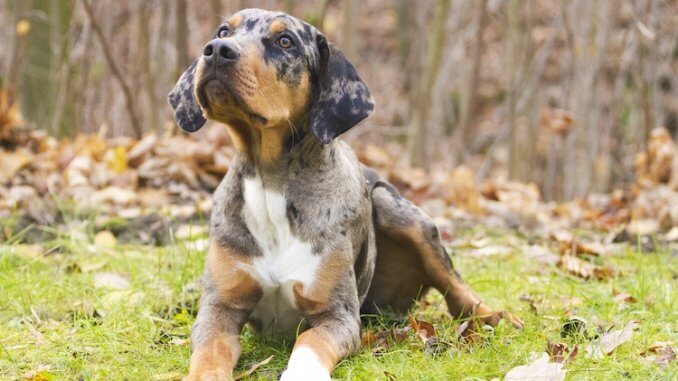







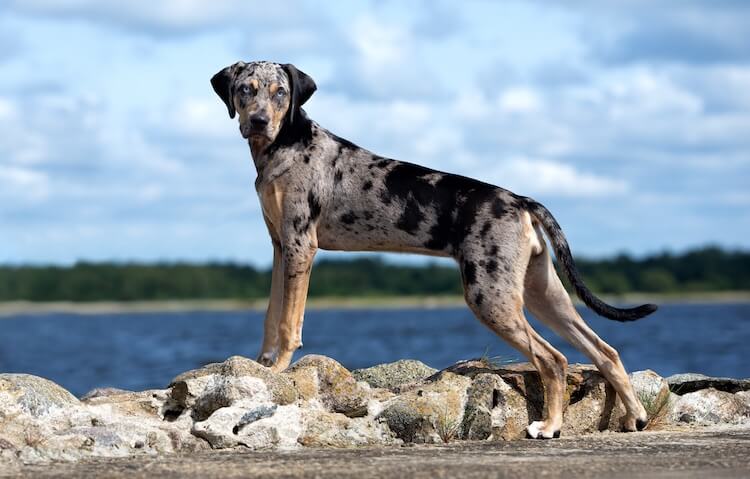
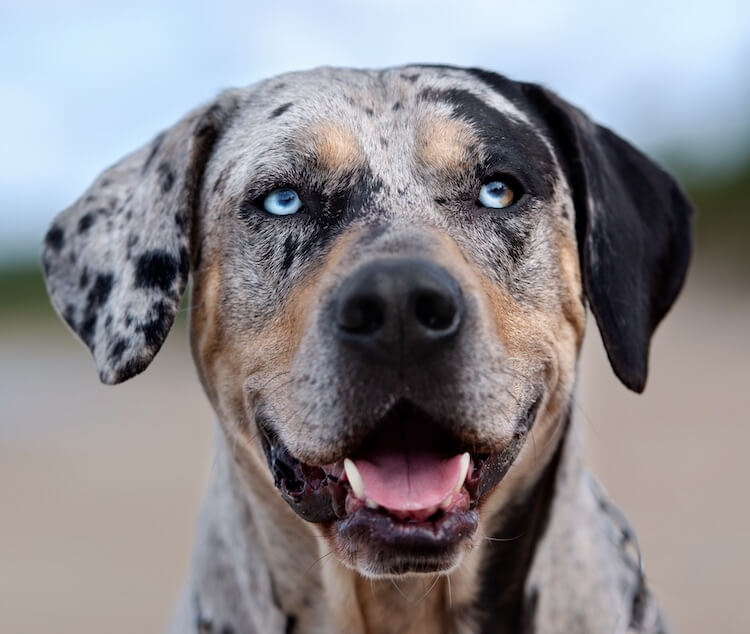
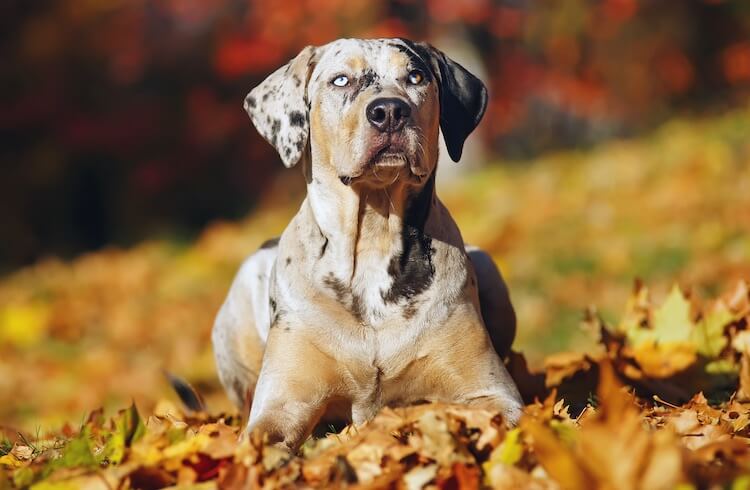
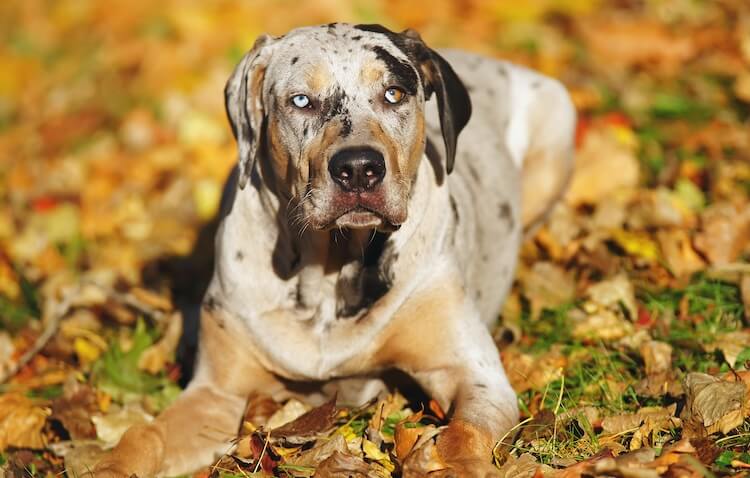 The Catahoula Leopard Dog is a breed apart, characterized by its striking appearance, sharp intelligence, and high energy levels. This breed demands specific care and is suited for particular types of environments and owners. If you’re considering bringing a Catahoula into your home, it’s essential to understand whether your lifestyle aligns with the needs of this robust and spirited breed.
The Catahoula Leopard Dog is a breed apart, characterized by its striking appearance, sharp intelligence, and high energy levels. This breed demands specific care and is suited for particular types of environments and owners. If you’re considering bringing a Catahoula into your home, it’s essential to understand whether your lifestyle aligns with the needs of this robust and spirited breed.
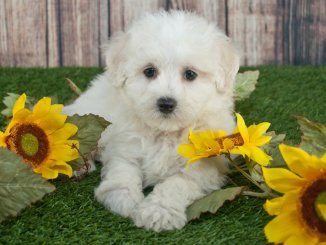

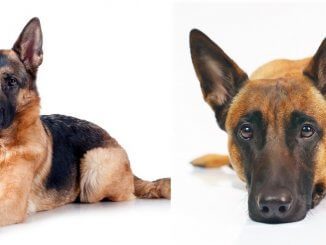
We have a Catahoula x Border Collie who presents mostly as Catahoula. If I had researched the breed I might not have said yes to the most wonderful dog I’ve ever had. The learning curve of being her owner was a solid two years. I cannot over emphasize their need for activity. Our girl needs an hour and a half off leash running every day. She also requires one on one interaction for at least 15 minutes a day. She is not friendly with other dogs, is unpredictable with children and suspicious of other people. If you are up for it, and your lifestyle can support a Catahoula, then buckle up for the best dog ride of your life!
I got a catahpula leopard dog when she was 7 weeks and 4 days the vet said I need some help with her she likes to bit in the face alot and I have a 2 year old and I cant stop her from bitting I need some advice.
As a breeder/trainer with more than 30 years experience using gentle methods, I need to tell you that a bite on the face is NOT allowed EVER. It needs to be immediately corrected in a harsh way, and that is with swift and firm slap on the dog’s face, along with a loud “No” at the same time. If the dog persists you must increase the firmness of the slap and the dog will make the decision to stop that behavior or not. You must be consistent, and if you are you will correct the problem quickly. Once the dog realizes that she must stop that behavior to avoid being punished, YOU must be certain to NOT carry a grudge. Just go on with your day watching for any repeat. And remember to watch your child because some kids are way too rough with animals.
My family and I just recently got a male purebred Catahoula. He was 2 months old when we got him and he’s now 8 months old. He’s incredibly intelligent! He learned to sit, lay, stay, wait until we say yes for a treat or food, etc all within a couple weeks of having him. It also didn’t take to long to potty train him, maybe a couple months. He is also a cuddle bug! He loves pretending to be a lapdog or is always laying at my feet when cooking in the kitchen. However, he is an escape artist extraordinaire and refuses to listen if he gets free outside. He climbed a 6 foot high fence, digs under the fences, or runs between your legs at a hundred miles per hour to get out of the front door. Once he’s out, he will not listen. It sometimes takes us a couple hours to chase him down in our neighborhood to get him. At the dog park, same thing. He runs a hundred miles per hour for over an hour and will not listen when you call him, won’t play catch (which he loves to do at home), it’s like he’s wild. We can no longer take him to our parents home because he can jump over their 5 foot fence, which is on a super nice golf course. Once he jumps it, he’s gone. Running through golfers, across the t boxes…it’s so incredibly frustrating that he will not come when called. I literally had to tackle him down to get him back, which almost dislocated my shoulder. We signed him up for training, but it’s still a month out before he’s able to start. Any tips on how we can get him to listen or is this just how Catahoulas are? We love him to death, but are so worried he going to either get hit by a car, taken by someone or get shot by someone when he gets out and runs away.